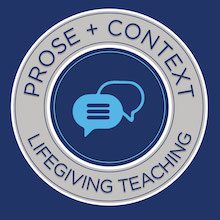Podcast: Play in new window | Download
Subscribe: Apple Podcasts | RSS | More
“How I Manage My Classroom: A Balancing Act”
By Karen E. B. Elliott,
English Faculty (1997-the present)
I always find it interesting how classes formulate—not according to a schedule, or what a student desires to take to graduate, or even what “track” they’ve chosen. Whenever my classes meet, within the first few weeks of school, each section becomes their own entity—their individual personalities come together and sort-of become “one” being. What I love about this is that each section, therefore, has different needs…even though I might be teaching all the seniors the same text. I love it because each class/section will look at a text differently depending on their individual and collective personalities, and as a result, I get to “see” a text in a new way with each group. Consequently, what has resonated most with myself is the three categories of how students learn: Sequential, Global and Exploratory.
I have realized that I do all three in one hour…which either means that I’m confused, or perhaps by default, I have learned over the years that the students do best with a balance. Often I will begin class with grammar, historical lecture, or a pop quiz which helps with my Sequential learners who tend to “respond to logic, order and sequence and work best with information that is presented methodically” (Willis 57). After this, I will often put students into groups—randomly chosen, and never the same kids together—to spend some time reflecting on specific topics/questions regarding the text, but at the same time giving them space to “enjoy discovery [and] frees them to experiment, create [different theories]…and explore their [literary] environment rather than be restricted by overly structured lessons”; however, little do these Exploratory learners realize, things are actually structured by myself, but they get the “interpersonal” engagement with their peers, which actually helps them focus and eventually present their ideas to the larger group (Willis 58). Next, I’ll have everyone come to “Discussion Group.” Someone turns off the classroom lights, and someone else turns on lamps as we gather together in different chairs, sit on the carpet with cozy pillows, someone boldly likes sitting in my desk chair, and if others like, they can even stay at a table as long as we come together to discuss what they’ve done in group work. This is great for all types of learners because they are moving around, recharging, and they are used to the cues. Here, however, at “Discussion Group,” the Global learners have it—here, they get to “connect a new general topic to something more concrete” (58). Here, we make connections from the literature to the practical, and make things more applicable/personal.
What is always challenging, however, is when one particular “Learning Group” dominates a class. This is like ordering a prime rib but getting scallops wrapped in bacon. Both are great, but sometimes they don’t always go together because someone’s allergic to fish. As a teacher, however, this is what’s on the menu. This is your class. Own it. Know that nothing is a coincidence and that God has more faith in you than you might have in yourself. If He thinks you can create the balance, then you can.
Willis, Judy. Brain-Friendly Strategies for the Inclusion Classroom. ACSD: Alexandria VA, 2007.
